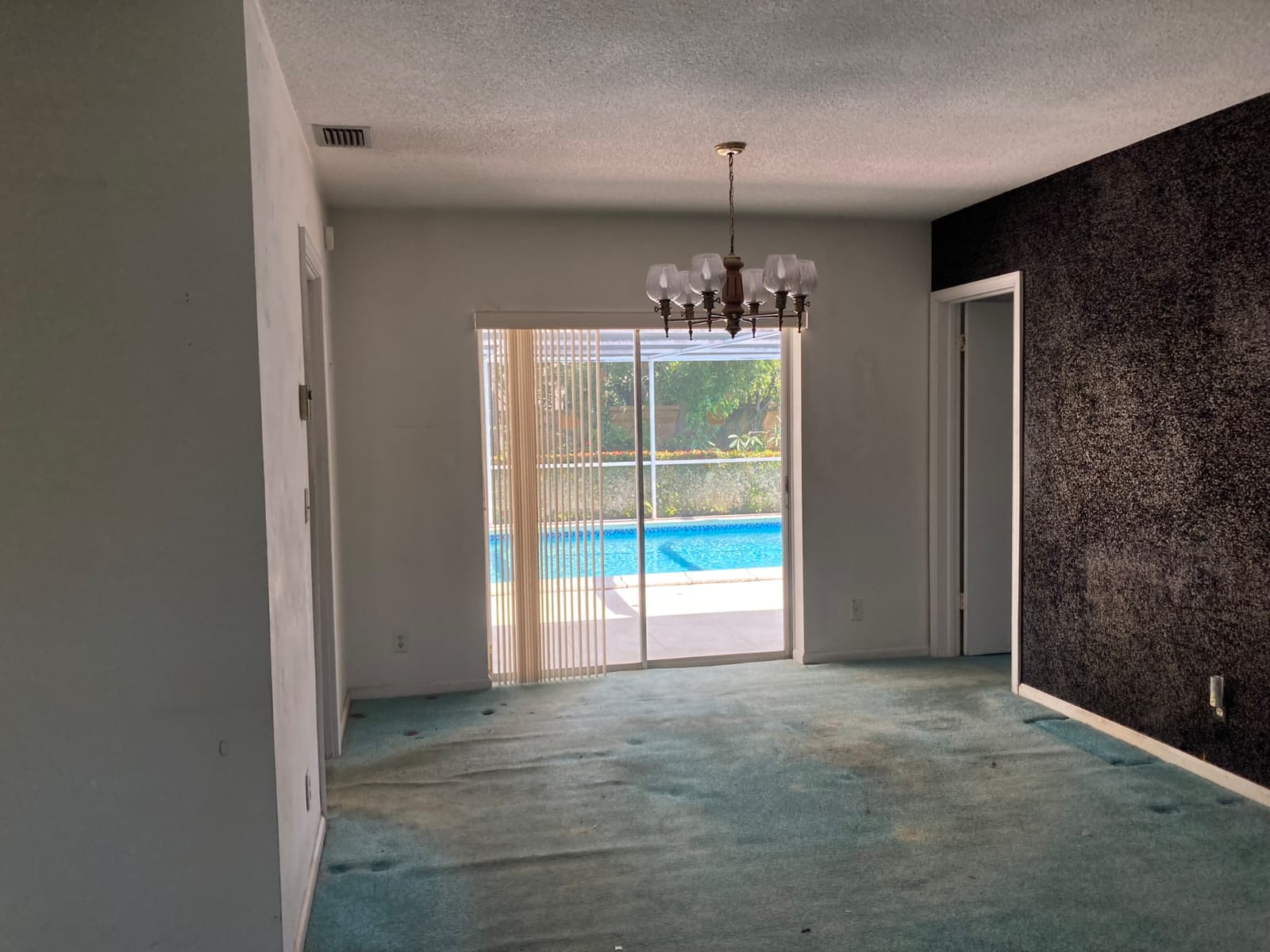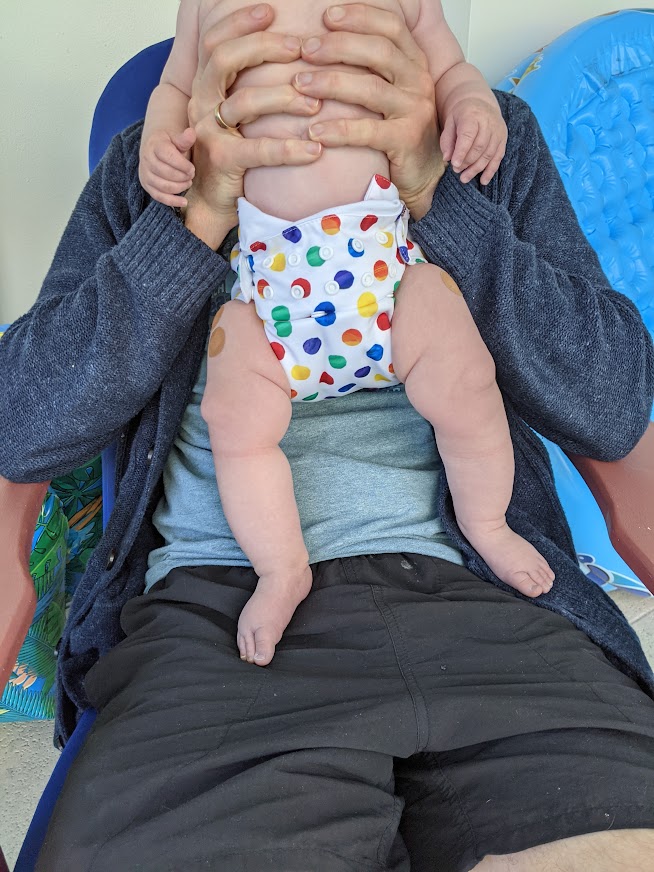Hi! Wanted to share some before pics (and a video) of our home, and also talk about our goals for making our home sustainable, weather-proof and low waste wherever possible. In many ways these goals are intertwined, as things like hurricane-proof windows and doors are also better at sealing in heat or cool.@gceldridge Our house tour!! this house was a lot of things when we first saw it (after closing 😱) but growing up in a home just like this one, I'm confident we can put our stamp on it and make it the perfect space for our family. it was built in the 60s-70s and pretty much has not been touched since then so it needs a ton of work! head over to my blog for full details on that merakikaiagapi.blogspot.com #homedecor #homereno #renovationproject #housetok ♬ Our House - Crosby, Stills, Nash & Young
This is it! A pretty typical style for our neighborhood. My favorite part about the location- it's right across the street from where I grew up.
A major goal of our renovation was to do things as low-waste as possible, but also within our budget. I had a lot of ideas about this, some of which we had to put off or abandon all together, but I think we’ve reached a point where we are getting the best renovation we can within our price range, and have a plan for future renovations that we’ll work towards doing every 1-2 years.
Our living and dining space had some pretty interesting color choices.
One of the four bedrooms- the house is pretty small by square footage but has lots of great usable space.
The kitchen hasn't been updated since the home was first built.
A look back from the entryway into the 'family' room, with the kitchen to the right.
Our kitchen with this awkward low ceiling that was apparently popular at one point- it's all demolished as of today!
The bathroom is very pink! We debated keeping the color, but ultimately decided to go with a clean white look.
It’s hard to see from the photos, but while our home doesn’t have the most practical layout (looking at you, entryway pantry-closet!), it does have really good bones! So as much as I’d love to change things up with a full remodel, we’re really just updating existing structures for the most part. This also feels less wasteful to me since we won’t need to destroy and rebuild things that are working pretty well as is (again, just a guess.) Once we finish with this round, we also plan to keep things more or less the same with a few exceptions. Here’s a few ways we plan to make this renovation sustainable:
Sourcing materials secondhand or recycled when possible: For items like fans, ceiling lights, and bathroom vanities, this makes a ton of sense! Unfortunately we don’t live locally yet, so it was difficult to hunt things down leading up to our renovation on places like FB Marketplace and local secondhand stores. I have my heart set on furnishing the space slowly after we move in, so hopefully we’ll have better luck in this area when we buy our furniture, since we plan to gift and sell the few pieces we have in Massachusetts.
We had some big dreams to use recycled products when possible (I had my heart set on recycled glass countertops or this super intriguing material made of recycled paper- more on that here!), sadly it just was not in the budget as it would have cost us at least 25% more than traditional countertop choices such as quartz. We are saving for another big chapter of the renovation next year that we think will be a huge step toward a low waste lifestyle (see below!)
Weather-proofing the house. This actually started before we purchased the home. We had been looking for a few months at the time and already knew we didn’t want to buy in a high-risk flood zone, given Florida’s risk of rising water levels (more on that here.) We ultimately got lucky enough to find a home in a low- medium risk flood zone away from any canals or large bodies of water.
Apart from this, we chose to install a tile floor rather than wood. Wood is a great look, don’t get me wrong- but tile will sustain water damage much better in the event of a flood. There are other options too, as you can see on this website, but we were happy to go with tile as it has the added benefit of helping to keep the house cool.
Decrease energy and water usage: I lumped all of this in one category because while the approach is different it’s ultimately the same end goal: reducing reliance on the grid. Florida Power and Light is notoriously difficult to deal with and has no plans for divesting in fossil fuel energy, which is pretty wild to me considering we live in the sunshine state. So our next big ticket item is going to be a new roof and solar panels! The newest Federal Laws around climate change have extended the 30% rebate on solar panels for several more years (yay!), making this change a bit more affordable. You can find more info on solar panels in Florida here.
We also plan to swap out older appliances for high efficiency-grade ones. The biggest saver here will typically be the fridge, but toilets, washer-dryers and dishwashers can also make a difference. There are also smart sprinkler systems that help avoid unnecessary watering (more on that later, and a link with some info on energy efficient appliances here.)
The garden- we're very excited to start planting here!
The house has a pool that was just about the only thing that had been updated in recent years.
Eco-friendly gardening. This might be the part of our new home that I’m most excited for- the garden! We live in a sub-tropical climate where planting can go on year-round. I don’t want to be too ambitious because I haven’t had much luck with gardening in the past, but lucky for me Peter has a pretty green thumb! In addition, we’re hoping to eventually adjust our landscaping to add more native plants and flowers that will benefit the local flora and fauna and attract some native pollinators, add in a smart sprinkler system like this one, and start composting! UF has an amazing website and app about native pollinators and sustainable landscaping- here is their about page for more info.
Projects for further down the line: While I’d love to have more room in the budget to accomplish all of our goals, like most folks, we’re going to wait a couple years on a few things, including our primary bathroom, adding insulation, and adding hurricane-safe windows and doors. We’re not entirely sure how long we’ll be in Florida, but it was important to us to reduce our carbon footprint since we are privileged enough to live in an area with so much potential for sustainable living. Do you have any questions? Better yet, any advice- drop them in the comments! Would love to hear from you if you’ve had experience with eco-friendly and low-waste renovation :)














